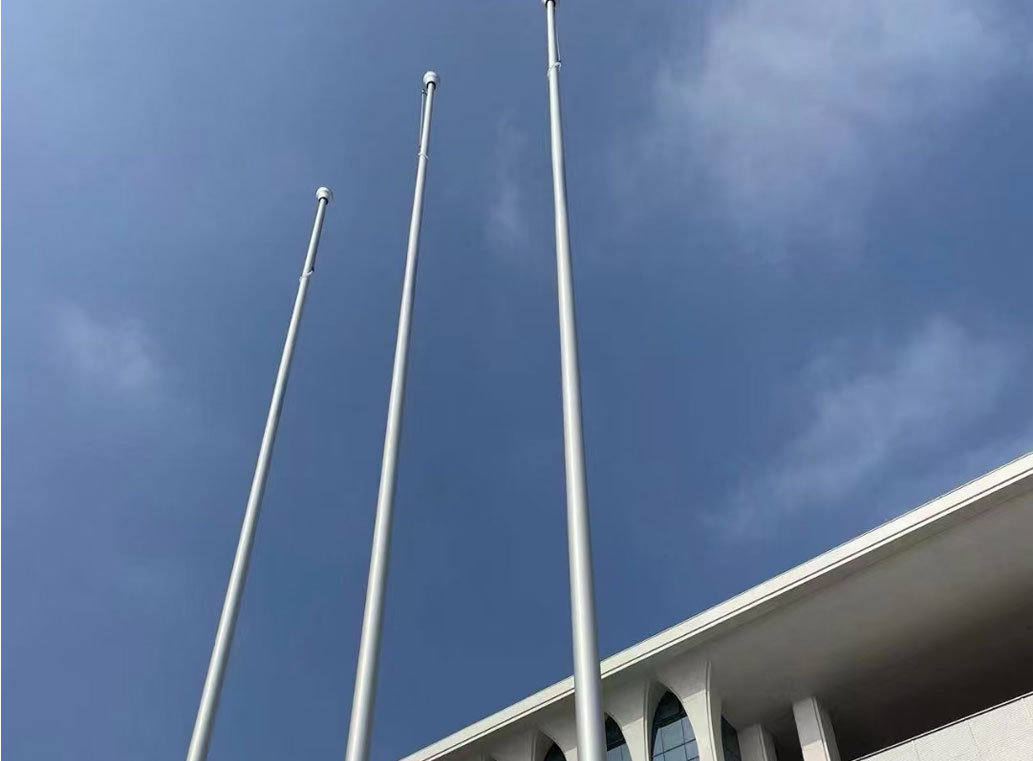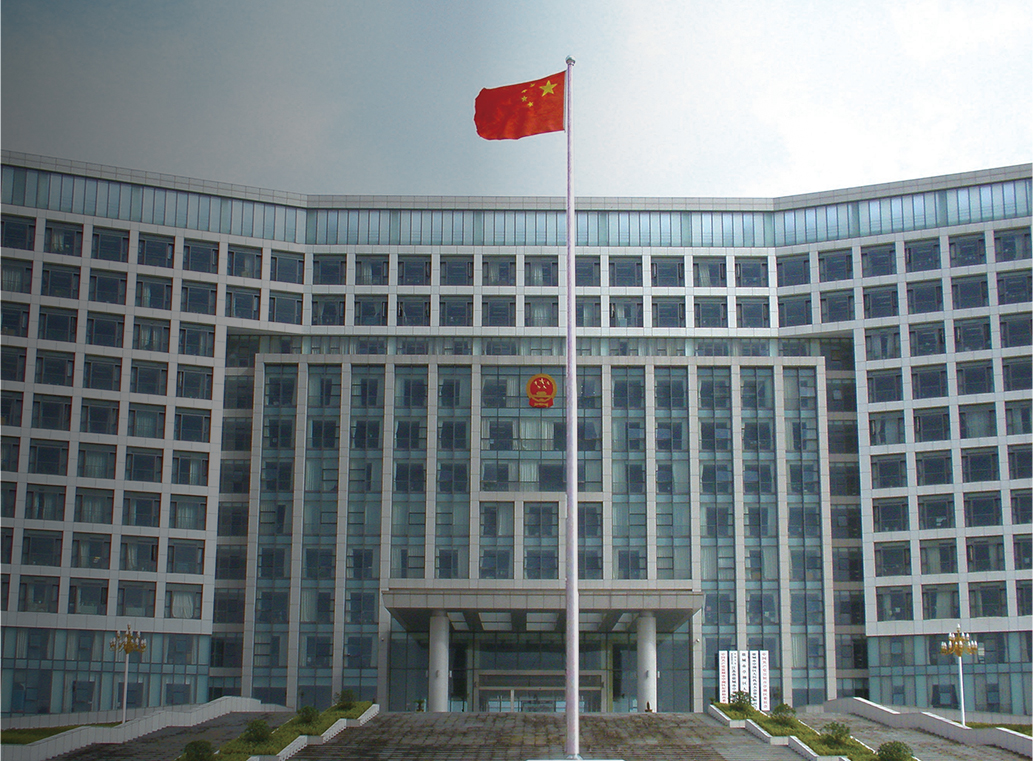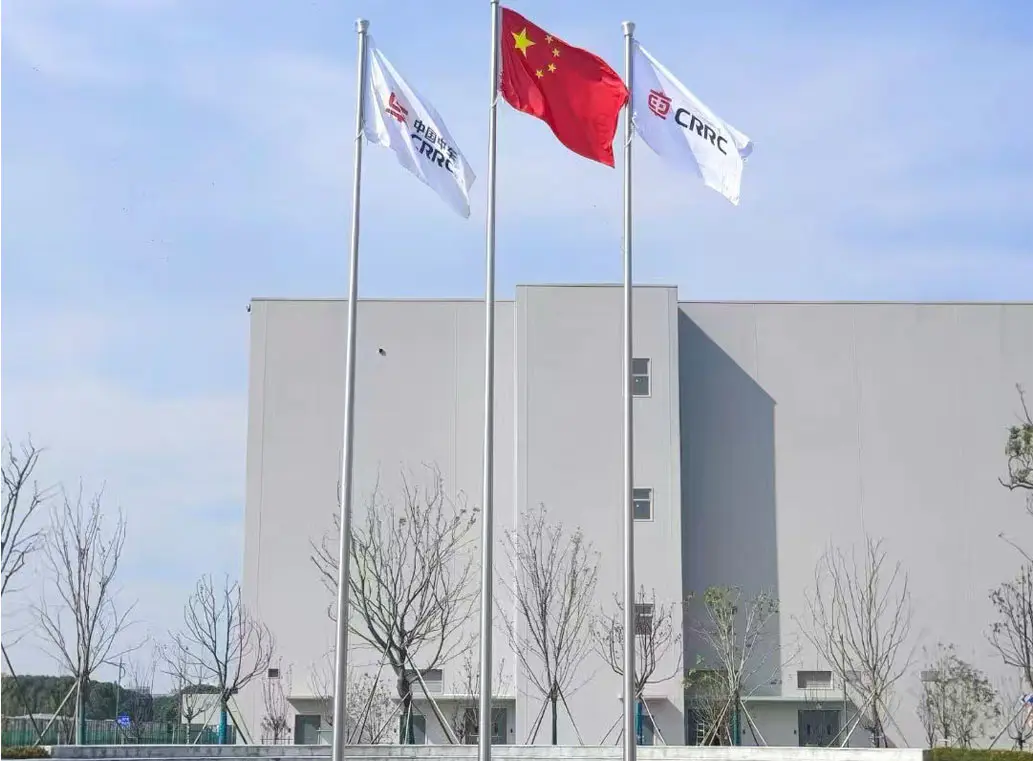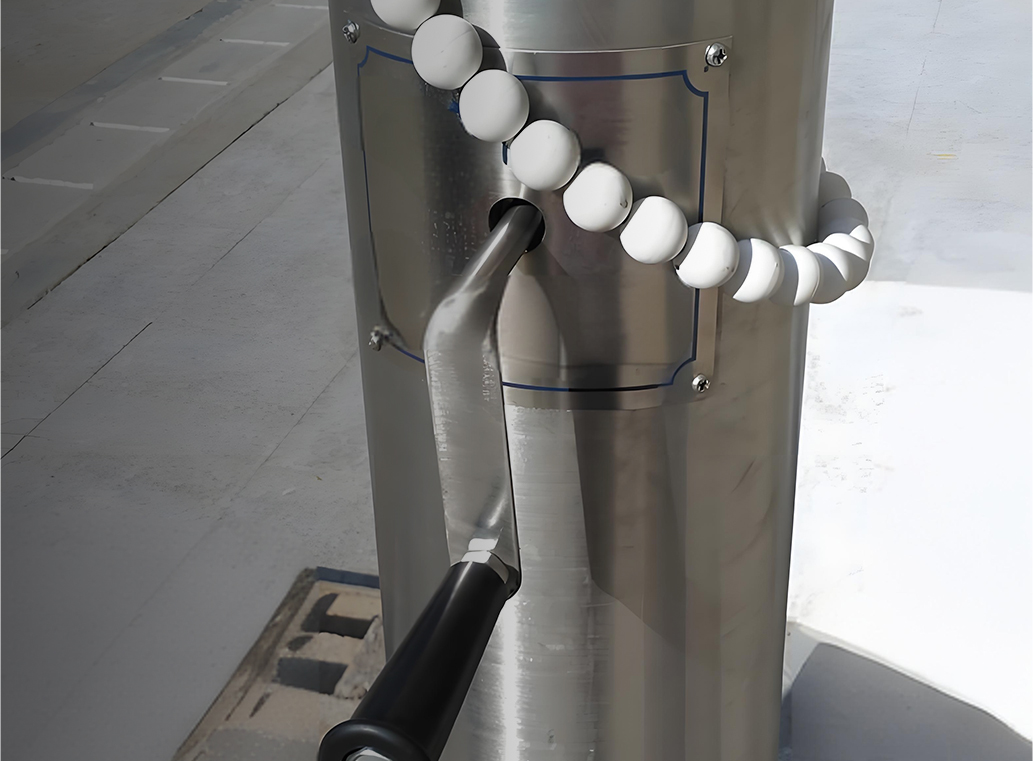Flagpoles stand as proud symbols, gracing homes, businesses, and public spaces alike. While various materials are used in their construction, stainles......
READ MORESubmit feedback
Aluminum Alloy Flagpole Sets New Standard for Long-lasting and Durable Flag Display
Unique advantages of aluminum alloy: Why it is the preferred material for flagpoles
In today's society, flagpoles are not only a tool for displaying flags, but also a part of architectural design and environmental aesthetics. Especially in public buildings, enterprises, schools, government agencies and other places, the material and appearance of the flagpole directly affect the image and temperament of the place. With the continuous development of science and technology and materials science, aluminum alloy materials have gradually become the preferred material for flagpole manufacturing due to their many advantages. Its excellent durability, lightness, corrosion resistance and sustainability make it the mainstream choice for modern flagpole manufacturing.
Basic characteristics of aluminum alloy materials
Aluminum alloy is a material alloyed with aluminum and other metals (such as copper, magnesium, silicon, etc.), which has relatively light weight, high strength, excellent corrosion resistance and good processing performance. These basic characteristics make aluminum alloy an ideal material in many fields, including construction, transportation, aerospace and other industries. In the field of flagpoles, these advantages of aluminum alloys have been fully utilized.
1. Excellent corrosion resistance
One of the most notable characteristics of aluminum alloy is its corrosion resistance. Compared with traditional steel materials, aluminum alloy has stronger natural corrosion resistance. A dense aluminum oxide protective film will naturally form on the surface of aluminum, which can not only effectively block moisture and corrosive substances in the air, but also can self-repair, thereby ensuring the stability of the flagpole in long-term exposure to outdoor environments.
For flagpoles located in coastal areas or in severe weather conditions, aluminum alloy has an irreplaceable advantage. In salt spray, humidity and windy sand environments, aluminum alloy flagpoles can maintain their appearance and structural integrity for a long time, avoiding problems such as rust, corrosion and fading.
2. Light and strong
Aluminum alloy is not only much lighter than steel, but also has a lower density while maintaining strength. This means that aluminum alloy flagpoles can remain stable under strong winds without affecting the reliability of installation or structure due to excessive weight. The strength of aluminum alloy can be adjusted according to the different alloy components, and manufacturers can choose the most suitable alloy type according to actual needs to ensure that the strength and toughness of the flagpole are optimally balanced.
In addition, aluminum alloy flagpoles are also more convenient during transportation and installation. Due to its light weight, aluminum alloy flagpoles are easier to carry and install, especially when high-altitude operations are required, which can reduce construction costs and construction difficulties.
3. Good processing performance
Aluminum alloy has excellent processability and can be processed by casting, extrusion, welding and other processes. This allows the appearance of the flagpole to be customized according to design requirements. Whether it is a straight, curved, or a flagpole with complex patterns, it can be achieved on aluminum alloy materials.
In addition, aluminum alloy has good surface treatment performance and can form a variety of colors and textures through processes such as anodizing and spraying to meet the aesthetic needs of different environments. Whether it is a high-end commercial building or a solemn government agency, aluminum alloy flagpoles can perfectly blend and enhance the overall atmosphere.
4. Excellent wind resistance
When designing aluminum alloy flagpoles, reasonable structural optimization can be carried out according to wind speed to ensure that the flagpole can withstand wind forces of different intensities. Through reasonable design and precise calculation, the stability of aluminum alloy flagpoles in high wind speed environments has also been greatly enhanced. Especially in windy coastal areas or high altitude areas, aluminum alloy flagpoles can effectively avoid damage caused by wind and ensure that the flags fly consistently.
5. Environmental protection and sustainability
Environmental protection is also one of the important reasons why aluminum alloy flagpoles have become the preferred material. The energy consumed in the production and recycling of aluminum alloys is relatively low, and aluminum is an infinitely recyclable material. By recycling aluminum alloys, resource waste and energy consumption in the production process can be greatly reduced, which meets the needs of modern society for green buildings and environmentally friendly products.
With the popularization of environmental protection concepts, more and more companies and government agencies pay more attention to environmental protection performance when choosing building materials. As a recyclable and sustainable material, aluminum alloy has gained more and more favor.
6. Long-term economic benefits
Although the initial investment of aluminum alloy flagpoles may be relatively high, its long-term durability and low maintenance costs make it have obvious advantages in economic benefits. Aluminum alloy flagpoles are highly weather-resistant and can reduce the need for frequent replacement and maintenance, especially in harsh environments, reducing the cost of replacing flagpoles due to corrosion and damage. Therefore, in the long run, aluminum alloy flagpole is a more economical and cost-effective choice.
Strong weather resistance: Aluminum alloy flagpoles for extreme weather
As the infrastructure for displaying flags, the weather resistance of flagpoles largely determines the service life and beauty of flagpoles. Weather resistance is particularly important for many flagpoles located in extreme weather environments. Whether in strong winds, heavy rains, scorching sun, or under sea breeze and salt spray erosion, flagpoles need to maintain a stable structure and appearance. Aluminum alloy flagpoles have become the most reliable choice in various weather conditions due to their weather resistance.
Natural protective film of aluminum alloy: self-healing corrosion resistance
One of the most prominent advantages of aluminum alloy flagpoles is their natural anti-corrosion properties. A dense aluminum oxide protective film will form on the surface of aluminum alloy materials. This film can not only effectively isolate external corrosive substances such as water, salt, oxides in the air, etc., but also has the ability to self-repair. Even if there are corrosive factors in the external environment, this protective film can automatically repair small damage, thereby maintaining the integrity of the flagpole.
Especially in coastal areas, sea breeze and salt spray are very serious for traditional metal materials. The self-healing ability of aluminum alloy makes it an ideal choice for resisting sea breeze erosion. The corrosive substances in salt spray, sea breeze and humid air are difficult to penetrate into the interior of aluminum alloy, which greatly extends the service life of the flagpole.
Wind resistance: Coping with extreme wind
In many areas with high wind speeds, the impact of wind on flagpoles is particularly important. The design of aluminum alloy flagpoles takes into account the problem of wind pressure in extreme weather. Compared with traditional steel flagpoles, aluminum alloy flagpoles perform more stably in strong winds. Aluminum alloy itself is light in weight and has high strength, which can provide sufficient wind resistance without adding too much burden.
The structural design of aluminum alloy flagpoles usually adopts streamlined design to reduce wind resistance and thus improve wind resistance. Even in an environment with wind speeds of tens of meters per second, aluminum alloy flagpoles can still remain stable without deformation or breakage. Whether in urban high-rise buildings, seaside resorts, or open-air venues in mountainous areas, aluminum alloy flagpoles can stand stably in bad weather and display flags.
The toughness of aluminum alloy also ensures that the flagpole will not suffer fatigue damage or structural problems after multiple strong winds. Even in extreme storms, aluminum alloy flagpoles are more resilient and reliable than flagpoles made of other materials.
High and low temperature resistance: Adapting to extreme climate change
Extreme temperature changes can cause serious damage to many materials, especially metal materials. In extremely cold weather, many metal materials are prone to brittleness and lose their original strength; in extremely hot weather, some metals may expand and deform. Aluminum alloy has significant advantages in this regard.
Aluminum alloy has thermal stability and resistance to temperature differences, and can maintain good physical properties between high and low temperatures. In extremely cold northern regions, aluminum alloy flagpoles can still remain strong and not easy to break in severe cold weather of dozens of degrees below zero. In hot desert areas, the thermal expansion coefficient of aluminum alloy is small, which can effectively avoid deformation or loosening caused by high temperature.

UV resistance: resist aging caused by sunlight
Under sunlight exposure, many materials will gradually fade and age due to ultraviolet radiation, losing their original luster and beauty. Aluminum alloy has natural UV resistance, and the oxide film on its surface can effectively resist the damage of ultraviolet rays, avoiding the fading and brittleness of flagpoles due to long-term exposure. Even in areas with strong sunlight, aluminum alloy flagpoles can still maintain their original color and luster.
The surface of aluminum alloy flagpoles can also be further enhanced by anodizing or spraying processes to ensure that the flagpoles are as strong as new even under long-term sunlight. This makes aluminum alloy flagpoles not only have advantages in function, but also maintain their appearance for a long time.
Excellent performance in extreme precipitation environments
Under extreme precipitation weather conditions such as heavy rain and snowstorms, the waterproof performance of flagpoles is also particularly important. Aluminum alloy flagpoles can effectively prevent moisture from entering the interior of the flagpole due to their smooth surface and good sealing, avoiding the occurrence of corrosion problems. In addition, aluminum alloy is not easily affected by moisture or water accumulation, which makes it more adaptable to high humidity environments than wood and other metal materials.
In snowy and frozen environments, aluminum alloy flagpoles also have strong anti-freeze properties. Compared with steel flagpoles, aluminum alloy flagpoles will not crack or damage at low temperatures, and can withstand the pressure of heavy snow to ensure that the flag is flying high.
Lightweight and strong: Analysis of the advantages of aluminum alloy flagpoles
In modern architecture and landscape design, flagpoles are not only tools for displaying flags, but also part of the overall aesthetics and structure. In order to ensure that the flag is stably raised in various environments, the material and design of the flagpole must have considerable strength and reliability. As a popular choice in recent years, the characteristics of "lightweight and strong" are the important reasons why it can stand out in a variety of environments.
Aluminum alloy has become the preferred material for flagpole design and manufacturing due to its advantages such as light weight, high strength and strong durability. This material can not only cope with various bad weather, but also achieve a perfect combination of beauty and functionality, and adapt to the diversified needs of modern society for flagpoles.
1. Lightweight: Reduce installation and transportation costs
Compared with traditional steel flagpoles, the density of aluminum alloy is significantly lower, which makes aluminum alloy flagpoles have obvious advantages in weight. The lightweight characteristics make aluminum alloy flagpoles more efficient and convenient during transportation and installation. Especially in high-rise buildings, city squares or some hard-to-reach areas, lightweight aluminum alloy flagpoles can reduce the difficulty of handling and installation, and reduce labor and time costs.
This lightness also makes aluminum alloy flagpoles more convenient to handle and store, especially in occasions where flagpoles need to be frequently replaced or moved, the flexibility of aluminum alloy flagpoles can provide more convenience.
2. Strong: Withstand the challenges of extreme weather
Although aluminum alloy flagpoles are lighter in weight, their strength and sturdiness are by no means inferior to traditional steel flagpoles. Aluminum alloy materials are alloyed to design, so that while maintaining lightness, they have sufficient strength to withstand various weather conditions.
Aluminum alloys are particularly strong in wind resistance, which makes them suitable for high wind speed environments. Whether in strong winds in coastal cities or in blizzards, aluminum alloy flagpoles can stand stably and are not easy to deform or break. Due to the perfect balance between the strength and weight of aluminum alloys, flagpoles can easily cope with harsh conditions such as strong winds and heavy rains, avoiding the trouble of frequent replacement of flagpoles.
The high strength of aluminum alloy materials is also reflected in their impact resistance. Even in the event of an accidental collision, aluminum alloy flagpoles can withstand a certain amount of external impact and are not easily damaged.
3. Excellent corrosion resistance: Extend service life
The corrosion resistance of aluminum alloy makes it an ideal material for harsh environments. Unlike steel, a dense aluminum oxide film will form on the surface of aluminum alloy, which can effectively isolate external corrosive substances such as moisture, oxides in the air, and salt spray. Especially in coastal areas or humid environments, aluminum alloy flagpoles can maintain the appearance and structure of the flagpole for a long time due to their natural corrosion resistance, avoiding rust, corrosion and other problems.
The corrosion resistance of aluminum alloy materials can not only cope with the invasion of salt spray, but also resist the damage of acid rain, pollutants and other materials to the material. Even if exposed to the outdoor environment for a long time, aluminum alloy flagpoles can still remain bright and strong, which is far more durable than wood and some ordinary metal materials.
4. Good processing performance: meet personalized design needs
The processing performance of aluminum alloy materials is very superior, which enables aluminum alloy flagpoles to be customized according to design requirements. Whether it is height, shape or surface treatment, it can be adjusted according to the specific needs of customers. In the manufacturing process of aluminum alloy flagpoles, extrusion, casting, welding and other processes can be used to provide more design freedom.
Aluminum alloy also has a strong surface treatment ability, and can make the flagpole present different colors and texture effects through processes such as anodizing and spraying. This processing characteristic enables aluminum alloy flagpoles to adapt to various architectural styles, which can present a modern and simple style, and can also meet the traditional solemn design requirements.
5. Adapt to various environments: flexibly used in different places
The lightness and sturdiness of aluminum alloy flagpoles enable them to be widely used in different types of places. Whether in corporate buildings, government agencies, commercial plazas, or in public places such as parks and schools, aluminum alloy flagpoles can perfectly blend in and enhance the atmosphere of the surrounding environment.
In some places where space is limited or high-altitude installation is difficult, the lightweight characteristics of aluminum alloy flagpoles make installation easier and do not require too many auxiliary equipment. In extreme climatic conditions, the weather resistance and strength of aluminum alloy can ensure the stability of the flagpole and avoid damage caused by weather changes.
6. Economical: Low maintenance cost
Although the initial investment of aluminum alloy flagpoles may be relatively high, due to its excellent durability and corrosion resistance, the maintenance cost of long-term use is very low. Aluminum alloy flagpoles do not require frequent maintenance and replacement, which saves a lot of maintenance costs compared to flagpoles made of traditional materials.
Aluminum alloy materials not only reduce the maintenance requirements in long-term use, but also reduce damage caused by bad weather or external forces, further reducing the overall operating cost of the flagpole.
Comparison between aluminum alloy flagpoles and traditional material flagpoles
With the continuous development of architecture and landscape design, flagpoles are not only for hanging flags, but also carry the display of environmental aesthetics, functionality and brand image. When choosing flagpole materials, traditional materials such as steel, wood and stainless steel have always occupied the mainstream position in the market. However, aluminum alloy flagpoles have gradually become the mainstream choice of modern flagpole design with their unique advantages.
Weight comparison: aluminum alloy is light, steel is heavy, and wood is moderate
Traditional flagpole materials such as steel and wood are heavy in weight. Although steel flagpoles are sturdy and durable, their weight makes transportation and installation difficult, especially in high-rise buildings or areas with inconvenient transportation. The construction process may require more manpower and mechanical equipment. Although wooden flagpoles are relatively light, their structure is not as stable as metal flagpoles, and they are easily deformed and rotten due to environmental changes.
Aluminum alloy flagpoles are light in weight and easy to transport and install. The lightweight characteristics of aluminum alloy flagpoles not only reduce transportation costs, but also reduce the dependence on large lifting equipment during installation. Especially in urban buildings or other high-rise buildings, the lightweight characteristics of aluminum alloy flagpoles provide more convenience for construction and shorten the construction period.
Strength comparison: the wind resistance of aluminum alloy and steel
Strength is a key factor to consider when selecting flagpole materials, especially wind resistance. Steel flagpoles usually have strong wind resistance due to their high metal density and solid structure, and can withstand the test of severe weather such as strong winds. However, steel has poor corrosion resistance and is easily eroded by factors such as moisture and salt spray. After long-term use, rust and corrosion may occur, which will affect the safety of the structure.
Wood is much more fragile. It is not only susceptible to moisture and rot, but also susceptible to insects and fungi, resulting in reduced strength and safety hazards.
Aluminum alloy flagpoles also perform well in strength. Although its density is lower than that of steel, through alloying design, aluminum alloy can provide sufficient strength while ensuring lightness. Aluminum alloy has good wind resistance and can maintain stability even in extreme weather conditions such as strong winds and heavy rains. In particular, an excellent balance has been achieved between wind resistance and corrosion resistance. Aluminum alloy flagpoles can stand stably in the wind and rain for a long time, reducing the maintenance and replacement costs caused by rust.
Corrosion resistance comparison: Aluminum alloy has obvious advantages
Corrosion resistance is one of the key factors in the selection of flagpole materials, especially in areas near the sea, with heavy humidity or serious air pollution. Although steel has high strength, one of its biggest disadvantages is that it is easy to rust and corrode. Even with anti-rust coating, it is difficult to resist the erosion of corrosive substances such as humid air and salt spray for a long time. Long-term exposure to harsh environments will seriously affect the structure of steel flagpoles, and even serious problems such as fractures may occur.
Although wooden flagpoles are not easy to rust, wood is easy to absorb water, rot, and be attacked by insects in a humid environment. Moreover, the corrosion resistance of wood is far inferior to that of metal materials and cannot provide sufficient durability.
The surface of aluminum alloy flagpoles naturally has a dense aluminum oxide film, which can effectively resist corrosive substances in the air and prevent moisture and salt spray from penetrating. This protective film can effectively self-repair, ensuring that the aluminum alloy flagpole maintains its intact appearance and structure after long-term exposure to harsh environments. Whether at the seaside, in areas prone to rain and snow, or in highly polluted urban environments, aluminum alloy flagpoles can show excellent corrosion resistance, far superior to steel and wood.
Aesthetic comparison: aluminum alloy design is more modern
In terms of aesthetic design, wood flagpoles often give people a natural and traditional feeling, but the wood surface is susceptible to wind and sun, and it is easy to fade and deform after long-term use. Steel flagpoles are relatively cold and hard, lacking natural texture, and giving people a relatively simple visual effect.
Aluminum alloy flagpoles not only have a modern appearance, but can also be surface treated through anodizing, spraying and other technologies to provide a variety of colors and textures. The surface of aluminum alloy can be treated to a metallic luster, or customized to meet the aesthetic needs of different buildings and places. Whether it is a high-rise building in a modern city or a cultural building with a long history, aluminum alloy flagpoles can be perfectly integrated to enhance the overall visual effect of the place.
Environmental protection comparison: aluminum alloy is more in line with the requirements of sustainable development
In modern society, environmental protection and sustainable development have become important considerations. Aluminum alloy, as a recyclable material, meets the requirements of green environmental protection. In the production process of aluminum alloy flagpoles, the pollution to the environment can be minimized to the greatest extent. At the same time, the recycling process of aluminum does not consume additional resources.
In contrast, the production and recycling of steel consumes more energy, and although wood is naturally environmentally friendly, large-scale deforestation and wood processing may have a certain negative impact on the environment. Therefore, the use of aluminum alloy materials is more in line with the concept of sustainable development and meets the strict requirements of modern architecture for environmental protection.
Cost comparison: initial investment and long-term benefits
From the perspective of initial cost, the price of aluminum alloy flagpoles may be slightly higher than that of wood flagpoles, but its comprehensive cost-effectiveness is much higher than that of wood and steel flagpoles. The maintenance cost of aluminum alloy flagpoles is low. Due to its strong corrosion resistance, it hardly requires frequent maintenance and repair during long-term use, while steel flagpoles need regular anti-rust treatment, and wood flagpoles need anti-corrosion and anti-insect treatment.
More importantly, aluminum alloy flagpoles have a long service life, reducing the need for frequent replacement and repair. In the long run, aluminum alloy flagpoles are undoubtedly the most cost-effective choice.
Environmentally friendly and recyclable: the green advantages of aluminum alloy flagpoles
With the continuous improvement of global environmental awareness, the greening and sustainable development of building materials have become an important topic of modern design. When choosing flagpole materials, we should not only pay attention to its functionality, durability and aesthetics, but also environmental impact and recyclability have become key factors considered by more and more people. In this context, aluminum alloy flagpoles have become the preferred material for flag display in the new era with their environmental protection and recyclability.
Compared with traditional flagpole materials such as steel and wood, aluminum alloy flagpoles have shown obvious advantages in green environmental protection. Its low energy consumption in the production process, low maintenance cost in long-term use, and high recyclability after use make aluminum alloy flagpoles meet the high standards of environmental protection in modern architecture and landscape design.
1. Low-energy production: green manufacturing of aluminum alloys
The production process of aluminum alloys is relatively energy-saving and environmentally friendly. Compared with steel production, the production process of aluminum alloys requires less energy. The manufacture of steel usually requires high-temperature smelting, a large amount of coal consumption and carbon dioxide emissions, while the refining process of aluminum alloys is relatively more efficient and reduces environmental pollution.
Aluminum alloy materials can be treated by processes such as anodizing, which can not only improve their corrosion resistance, but also effectively improve their surface texture. The anodizing process uses an electrolytic treatment method, which can be completed without using a large amount of harmful chemicals. This not only makes aluminum alloy flagpoles more durable, but also further reduces the burden on the environment during the production process.
2. Long service life: reduce frequent replacement and waste of resources
The durability of aluminum alloy flagpoles greatly reduces the consumption and replacement frequency of materials during long-term use. Aluminum alloy has good corrosion resistance and wind resistance. Even in extreme environments such as high humidity and salt spray, aluminum alloy flagpoles can maintain a stable structure and beautiful appearance. This long-life characteristic reduces the waste of resources caused by frequent replacement of flagpoles.
Compared with traditional wood and steel flagpoles, aluminum alloy flagpoles do not require frequent maintenance and replacement due to factors such as weather changes, moisture or oxidation. This not only saves a lot of manpower, material and financial resources, but also effectively avoids the negative impact on the environment due to the accumulation of waste.
3. Highly recyclable: achieve resource recycling
A significant advantage of aluminum alloy is its excellent recyclability. Aluminum alloy materials can be put into use again through a simple recycling and reprocessing process without losing their original physical properties. According to research, the recycling process of aluminum alloy requires almost no new energy and does not produce pollution. This makes aluminum alloy flagpole a highly environmentally friendly material choice.
When the aluminum alloy flagpole ends its service life, all its parts can be reprocessed into new aluminum products through a recycling mechanism. Compared with materials such as wood and steel, aluminum alloy has a higher recycling rate, and the energy consumption in the recycling process is significantly lower than that of other metal materials. According to statistics, the recycling efficiency of aluminum alloy is as high as more than 95%, which means that most aluminum alloy flagpole materials can be recycled without becoming garbage or pollutants.
4. Non-polluting materials: no harm to soil and water sources
The aluminum alloy material itself does not release toxic substances that are harmful to the environment during production and use. Unlike some coated or treated steel materials, aluminum alloy flagpoles do not release harmful chemicals or heavy metals, avoiding pollution to soil and water sources. This is particularly important for flagpoles that need to be exposed to the natural environment for a long time, especially at the seaside, lakes or other natural scenic spots, where the environmental protection of aluminum alloy flagpoles is particularly prominent.
Although wood flagpoles seem to be natural and environmentally friendly, certain chemical preservatives may be used in their processing. These chemicals may penetrate into the soil and water sources during long-term use, causing environmental pollution. The rust produced by steel flagpoles after long-term use, if not properly handled, will also cause certain pollution to the soil and water sources.
5. Lightweight and reduces transportation energy consumption
The light weight of aluminum alloy flagpoles makes it more energy-saving and environmentally friendly during transportation. Compared with the heavy steel flagpoles, the lightness of aluminum alloy flagpoles reduces transportation costs and can reduce energy consumption and carbon emissions during transportation. Especially in long-distance transportation, lightweight aluminum alloy flagpoles can save a lot of fuel and further reduce the environmental burden.
Lightweight aluminum alloy flagpoles not only reduce transportation costs, but also simplify the installation and moving process. In the replacement of flagpoles in some special areas, the demand for manpower and mechanical equipment is reduced. This not only saves money for enterprises and institutions, but also contributes to the green development of the entire construction industry.
6. The harmlessness of aluminum alloy: suitable for various environmental applications
Aluminum alloy flagpoles have shown their harmlessness advantages in many application scenarios. The physical properties of aluminum alloys are stable and will not affect the surrounding ecological environment. They are particularly suitable for urban environments and nature reserves with intensive human activities. Since aluminum alloys do not release harmful gases, they avoid the pollution of harmful substances to the air, soil and water quality, making it an ideal green building material.
After anodizing, the surface of aluminum alloy flagpoles has UV resistance and can effectively prevent aging and fading caused by ultraviolet rays. Compared with ordinary paint or wood surfaces, the surface treatment process of aluminum alloys is more environmentally friendly and reduces the use of chemicals.
Wide Application of Aluminum Alloy Flagpoles in Commercial and Public Places
As an important tool for displaying flags, flagpoles are no longer limited to specific places such as government agencies or military bases. In modern society, the application of flagpoles is becoming more and more extensive, especially in commercial and public places. Aluminum alloy flagpoles have become the first choice for flag display in these places due to their lightness, strength, corrosion resistance and beauty. Whether in city squares, shopping malls, hotels, corporate buildings, or in public places such as parks and schools, aluminum alloy flagpoles can provide reliable support and visual effects, adding highlights to these spaces.
1. An important role in urban landscape
With the advancement of urbanization, more and more city squares, streets and commercial areas have begun to install flagpoles to display the flags of countries, cities or companies. In these public areas, flagpoles not only bear the function of displaying flags, but also part of the urban landscape. Aluminum alloy flagpoles have become the ideal flagpole choice for these areas because of their sturdy structure, modern appearance and durability.
Especially in city squares and crowded commercial districts, aluminum alloy flagpoles can stably withstand wind and rain and display flags for a long time without damage. At the same time, the lightweight characteristics of aluminum alloy flagpoles also make installation and transportation easier, reducing construction costs and time, making large-scale flagpole deployment more efficient.
2. Commercial buildings and corporate image display
For commercial buildings and enterprises, flagpoles are not only a symbol of corporate culture, corporate image and social responsibility, but also an important tool for conveying brand spirit to the outside world. In this environment, flagpoles not only need to have stability, but also require modern and tasteful appearance design. The unique advantages of aluminum alloy flagpoles just meet this demand.
After the surface is anodized, the aluminum alloy flagpole can present a metallic luster, and the color and texture are more modern and refined. Its appearance can be customized according to the architectural style, and it is perfectly integrated with the overall design of modern business buildings and high-end enterprises. Especially in high-rise buildings and financial centers in international cities, the simple, atmospheric and modern design of aluminum alloy flagpoles makes it an ideal choice for enhancing corporate image and architectural appearance.
The corrosion resistance and durability of aluminum alloy also means that companies do not have to worry about flagpoles rusting or being damaged due to long-term exposure to outdoor environments, further reducing the cost and workload of later maintenance.
3. Flag display in hotels and resorts
In high-end hotels and resorts, flagpoles are not only a tool for displaying national flags, but also a part of conveying hotel culture and brand image to tourists. Aluminum alloy flagpoles are often the first choice for high-end places such as five-star hotels and luxury resorts with their unique gloss and simple and modern design.
These places are usually located in coastal areas or areas with drastic climate changes. The wind resistance and corrosion resistance of aluminum alloy flagpoles are particularly suitable for long-term exposure to sea breeze and humid environments. Aluminum alloy flagpoles can not only withstand the challenges of extreme weather, but also maintain their appearance intact for a long time, ensuring that tourists can see the flag flying high from any angle, highlighting the noble temperament of hotels and resorts.
For some luxury resorts with large-scale landscapes or courtyards, the high-quality surface treatment of aluminum alloy flagpoles makes them a perfect landscape element. Aluminum alloy flagpoles can blend with the natural environment and architectural style around the scenic area, become a visual focus, and enhance the quality of the overall landscape.
4. Symbolic function of parks and squares
Public places such as parks, cultural squares and stadiums usually install flagpoles to display national flags, city flags or other symbolic flags. These places are usually crowded with people, and flagpoles need to be not only practical, but also aesthetically pleasing and culturally symbolic.
Aluminum alloy flagpoles are the preferred choice for many public places due to their wind resistance, corrosion resistance and diverse appearance. Especially in open areas such as squares, stadiums and parks, aluminum alloy flagpoles can stand stably and are not easily damaged even in strong winds, ensuring that the flags are displayed consistently.
Aluminum alloy materials can withstand extreme weather conditions such as high temperatures, rain, ice and snow, which often exist in outdoor public places. The durability and low maintenance cost of aluminum alloy flagpoles make it an ideal choice for some historic parks and cultural squares. For these places, the flagpole is not just an object to display the flag, it is also a symbol of the history and culture of the place.
5. Flag Displays in Schools and Educational Institutions
Schools, universities, and other educational institutions install flagpoles on their campuses to display national flags, school flags, and other flags of special significance. Aluminum alloy flagpoles have become the preferred material for many educational institutions due to their sturdiness and durability.
These educational venues need to use flagpoles for a long time to display the flags of the country, educational institutions, or local governments. The wind resistance, corrosion resistance, and lightness of aluminum alloy flagpoles can well meet these requirements. Compared with wooden flagpoles, aluminum alloy flagpoles not only have stronger structural stability, but also can resist fading and aging problems that may be caused by long-term exposure to sunlight, ensuring that the flag is consistently displayed to the public.
The modern and simple sense of aluminum alloy flagpoles can also complement the overall design of the school. Whether it is a small school or a large university campus, the high degree of customization of aluminum alloy flagpoles can meet different size and appearance requirements.
6. Application in conference centers and exhibition venues
In international conference centers, exhibition halls and other places, the use of flagpoles is not only for hanging flags, but more importantly, it enhances the overall atmosphere and professionalism. In these places, the quality and appearance of the flagpoles directly affect the grade and image of the venue.
Aluminum alloy flagpoles are an ideal choice for exhibition and conference venues with their modern, simple appearance and strong functionality. Their strong corrosion resistance and wind resistance enable flagpoles to operate stably for a long time even in large-scale exhibitions. Especially in international exhibitions or large conferences, the high strength and beautiful design of aluminum alloy flagpoles can effectively enhance the overall atmosphere of the venue and leave a deep impression on the participants.
-
-
1. Understanding the Importance of Regular Maintenance for Aluminum Alloy Flagpoles Regular maintenance of your aluminum alloy flagpole is essential ......
READ MORE -
Unique advantages of aluminum alloy: Why it is the preferred material for flagpoles In today's society, flagpoles are not only a tool for displaying f......
READ MORE -
What is the aluminum alloy electric intelligent lifting conical flagpole? The aluminum alloy electric intelligent lifting conical flagpole is a high-e......
READ MORE

 English
English русский
русский عربى
عربى







